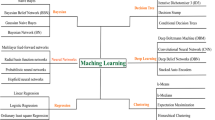Abstract
The acoustic impedance (AI) inversion aims to obtain a high-resolution impedance volume by integrating well-log and band-limited seismic data. Two AI inversion schemes: the coloured inversion (CI) and the model-based inversion (MBI) are utilized to characterize possible sand channel from the post-stack seismic section and log data from 13 wells from the Blackfoot region, Alberta, Canada. The results from analyses indicate that both the model-based and coloured inversion methods provide mutually consistent impedance volumes with an average correlation coefficient of 0.986 and 0.886 for MBI and CI, respectively. Both inversions show low-impedances ranging from 6750-7350m/s*g/cc between 1060ms and 1065ms time interval which is interpreted as a sand channel. The slice of the acoustic impedance variation along all cross line and inline validates the presence of low impedances along the interpreted sand channel. Thereafter, the multivariate regression and the Probabilistic Neural Network (PNN) are employed to predict porosity volumes using CI and MBI inverted impedance as external attributes. The cross-plots between predicted porosities and actual porosities using multivariate regression and PNN algorithms indicate that PNN produces better statistical estimates of porosity distribution compared to those predicted from the multivariate regression. Both methods show high porosity values along the sand channel. The maximum porosity in the sand channel is 18% when MBI derived impedance is used as an external attribute while it is 16% in the case of CI. The results suggest that given seismic and well log data for a region, a combination of model-based inversion and PNN can produce a more reliable estimate of the petrophysical properties of the sub-surface.
Similar content being viewed by others
References
Berteussen, K. and Ursin, B. (1983) Approximate computation of the acoustic impedance from seismic data. Geophysics, v.48(10), pp. 1351–1358.
Chambers, R. L., Zinger, M. L., and Kelly, M. C. (1994) Constraining geostatistical reservoir descriptions with 3–d seismic data to reduce uncertainty. AAPG Spec. Vol., pp.143–157.
Chen, Q. and Sidney, S. (1997). Seismic attribute technology for reservoir forecasting and monitoring. The Leading Edge, v.16(5), pp.445–448.
Ferguson, R. J. and Margrave, G. F. (1996) A simple algorithm for band–limited impedance inversion. CREWES Research Report, v.8(21), pp.1–10.
Hampson, D. P., Schuelke, J. S., and Quirein, J. A. (2001) Use of multiattribute transforms to predict log properties from seismic data. Geophysics, v.66(1), pp.220–236.
Hampson, D.P., Schuelke, J.S. and Quirein, J.A. (2001) Use of multi–attribute transforms to predict log properties from seismic data. Geophysics, v.66(1), pp.220–236.
Haris, A., Novriyani, M., Suparno, S., Hidayat, R. and Riyanto, A. (2017) Integrated seismic stochastic inversion and multi–attributes to delineate reservoir distribution: Case study MZ fields, Central Sumatra Basin. In AIP Conference Proceedings, AIP Publishing, v.1862(1), p. 030180.
Lancaster, S., Whitcombe, D., et al. (2000) Fast track coloured inversion. SEG Annual Meeting, pp.1572–1575.
Larsen, J. A., Margrave, G. F., Lu, H.–x., and Potter, C. C. (1998) Simultaneous PP and PS inversion by weighted stacking applied to the Blackfoot 3c–3d survey. CREWES Research Report, v.10(50), p.1423.
Latimer, R. B., Davidson, R., and Van Riel, P. (2000) An interpreter’s guide to understanding and working with seismic–derived acoustic impedance data. The Leading Edge, v.19(3), pp.242–256.
Leiphart, D. J. and Hart, B. S. (2001) Comparison of linear regression and a probabilistic neural network to predict porosity from 3–d seismic attributes in lower brushy canyon channeled sandstones, southeast new Mexico. Geophysics, v.66(5), pp.1349–1358.
Lindseth, R. O. (1979) Synthetic sonic logs–a process for stratigraphic interpretation. Geophysics, v.44(1), pp.3–26.
Mallick, S. (1995) Model–based inversion of amplitude–variations–with–offset data using a genetic algorithm. Geophysics, v.60(4), pp.939–954.
Maurya, S. and Singh, K. (2015a) Estimation of seismic parameters from prestack inversion. In 2nd international conference on comp. and exp. sci. and engg. (ICCESEN), Oct–14–19. Antalya, Turkey.
Maurya, S. and Singh, K. (2015b) LP and ML sparse spike inversion for reservoir characterization–a case study from Blackfoot area, Alberta, Canada. In 77th EAGE Conference and Exhibition, June 01st–04th, Madrid, Spain, doi:10.3997/2214–4609.201412822.
Maurya, S.P. and Sarkar, P. (2016) Comparison of Post stack Seismic Inversion Methods: A case study from Blackfoot Field, Canada. Internat. Jour. Scient. Engg. Res., v.7(8), pp.1091–1101.
Mohamed, I.A., Shenkar, O. and Mahmoud, H. (2017) Understanding reservoir heterogeneity through water–saturation prediction via neural network–A case study from offshore Nile Delta. The Leading Edge, v.36(4), pp.298–303.
Pendrel, J. (2006) Seismic inversion–a critical tool in reservoir characterization. Scandinavian oil–gas magazine, v.5(6), pp.19–22.
Russell, B. H. (1988) Introduction to seismic inversion methods. SEG Course Notes Series–2.
Russell, B., Hampson, D., Schuelke, J., and Quirein, J. (1997) Multiattribute seismic analysis. The Leading Edge, v.16(10), pp.1439–1444.
Singh, S., Kanli, A.I., Sevgen S. (2016) A general approach for porosity estimation using artificial neural network method: a case study from Kansas gas field. Stud. Geophys. Geod., v.60(1), pp.130–140.
Singh, V., Srivastava, A., Tiwary, D., Painuly, P., and Chandra, M. (2007) Neural networks and their applications in lithostratigraphic interpretation of seismic data for reservoir characterization. The Leading Edge, v.26(10), pp. 1244–1260.
Todorov, T., Stewart, R., Hampson, D., and Russell, B. (1998) Well log prediction using attributes from 3c–3d seismic data. CSPG Spec. Publ., pp. 228–229.
Tonn, R. (2002). Neural network seismic reservoir characterization in a heavy oil reservoir. The Leading Edge, v.21(3), pp. 309–312.
Walls, J. D., Taner, M. T., Taylor, G., Smith, M., Carr, M., Derzhi, N., Drummond, J., McGuire, D., Morris, S., Bregar, J., et al. (2002) Seismic reservoir characterization of a us midcontinent fluvial system using rock physics, post–stack seismic attributes, and neural networks. The Leading Edge, v.21(5), pp.428–436.
Author information
Authors and Affiliations
Corresponding author
Rights and permissions
About this article
Cite this article
Maurya, S.P., Singh, K.H. Predicting Porosity by Multivariate Regression and Probabilistic Neural Network using Model-based and Coloured Inversion as External Attributes: A Quantitative Comparison. J Geol Soc India 93, 207–212 (2019). https://doi.org/10.1007/s12594-019-1153-5
Received:
Accepted:
Published:
Issue Date:
DOI: https://doi.org/10.1007/s12594-019-1153-5




